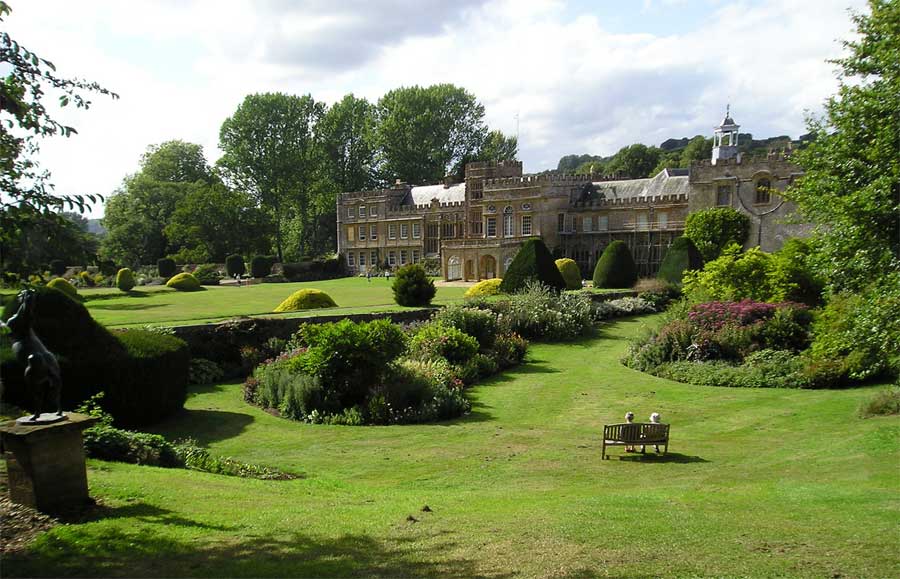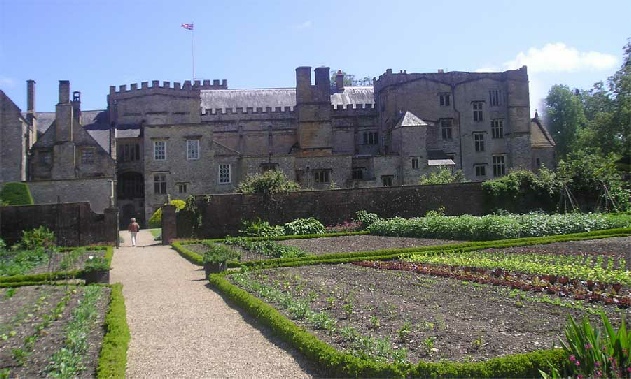FORDE ABBEY
Founded in 1141 on the banks of the River Axe, the Cistercian monastery at Forde
Abbey was one of the richest, most learned and influential medieval monasteries in
the south west. (Brief History of Thorncombe) Baldwin, a monk of lowly birth rose
to be Archbishop of Canterbury and crowned Richard Coeur de Lion. He died in the
crusades. In 1313, Edward II granted the Abbot of Forde the right to hold a six day
fair at Thorncombe beginning on Easter Tuesday and the right to hold a weekly market.
The Abbey continued to prosper until Henry VIII’s dissolution of the monasteries
in 1539. The Abbot, Thomas Chard, ‘a man of great learning, wisdom, energy and imagination’
who had spent many years developing the Abbey, handed it over peacefully. He removed
to Thorncombe vicarage where he held the living, thus ending the religious tradition
at Forde Abbey. Cloisters constructed by Thomas Chard, the chapel which was once
the monastic chapter house and the undercroft below the monks’ dormitory, now restored
to reveal more of its 13th century structure, can still be seen today.
Famous associations
During the next hundred years the Abbey passed through various families. In 1649
Edmund Prideaux, Oliver Cromwell’s Attorney General bought it from Sir Henry Rosewell
and transformed the monastery buildings into an Italian style palazzo. He was succeeded
by his son Edmund, who supported and gave shelter to the Duke of Monmouth and as
a result was sent to the Tower of London.
According to Peter Earle in his book on the Monmouth Rebellion, Mallachi Mallack,
a wealthy clothier of Axminster was condemned to death at Dorchester and later pardoned
for giving evidence against Prideaux. The prisoner was ‘given’ to the infamous Judge
Jefferies who in order to obtain some reward for his ‘loyal service’ sold Prideaux
a pardon. A sum of £14,500 was settled upon and this is proof, says Earle, that Jefferies
made money by selling pardons.
Another well-known name also said to have given evidence against Prideaux was
Azariah Pinney of nearby Bettiscombe Manor who was sent to the West Indies for his
part in the Monmouth Rebellion. Pinney’s sister was said to have paid £65 so that
her brother would live as a free man in the West Indies. Here he laid the foundation
for his family’s fortune. Thirty three people from Thorncombe were accused of involvement
in the Rebellion.
Treasures
Forde Abbey contains many beautiful treasures collected by the Roper family, which
delight the eye of the visitor. In addition there are wonderfully alive Mortlake
tapestries which Queen Anne presented to Francis Gwyn, a previous occupier of the
Abbey and who was her Secretary of War. (Thorncombe’s Jacobites) The beautifully
proportioned salon which is said to have been built to house the tapestries with
its marvellously carved ceiling, makes a worthy setting for these magnificent works
of art. The Roper family has also added to the rich heritage with their contributions
of tapestry and embroidery.
Gardens
Travellers making their way over the hills to Forde Abbey in times past must have
welcomed the view of the old Abbey nestling in the valley by the River Axe. Equally
today, the sight of the present Abbey is a welcome sight with its well laid out lawns,
water features, the handsome trees, along the Axe, and its neatly laid out vegetable
garden. So the sense of timelessness continues. The landscape of the Abbey, partly
natural, partly created in the 18th century by the Gwyns with the addition of the
magnificent conifers in the 19th century by Herbert Evans is a legacy used by the
Ropers to make the gardens worthy of the house they surround.
© JUNE EDE
Taken from the late June Ede’s unpublished manuscript, ‘Thorncombe, A Village History’.
June lived in Thorncombe village from 1968 until shortly before her death in 2009.
Written in 1982 in response to a national Women’s Institute initiative, it was donated
by Mrs Ede, to the TVT history box in 2008. Reproduced here by kind permission of
June’s daughter, Penny Kennedy.




